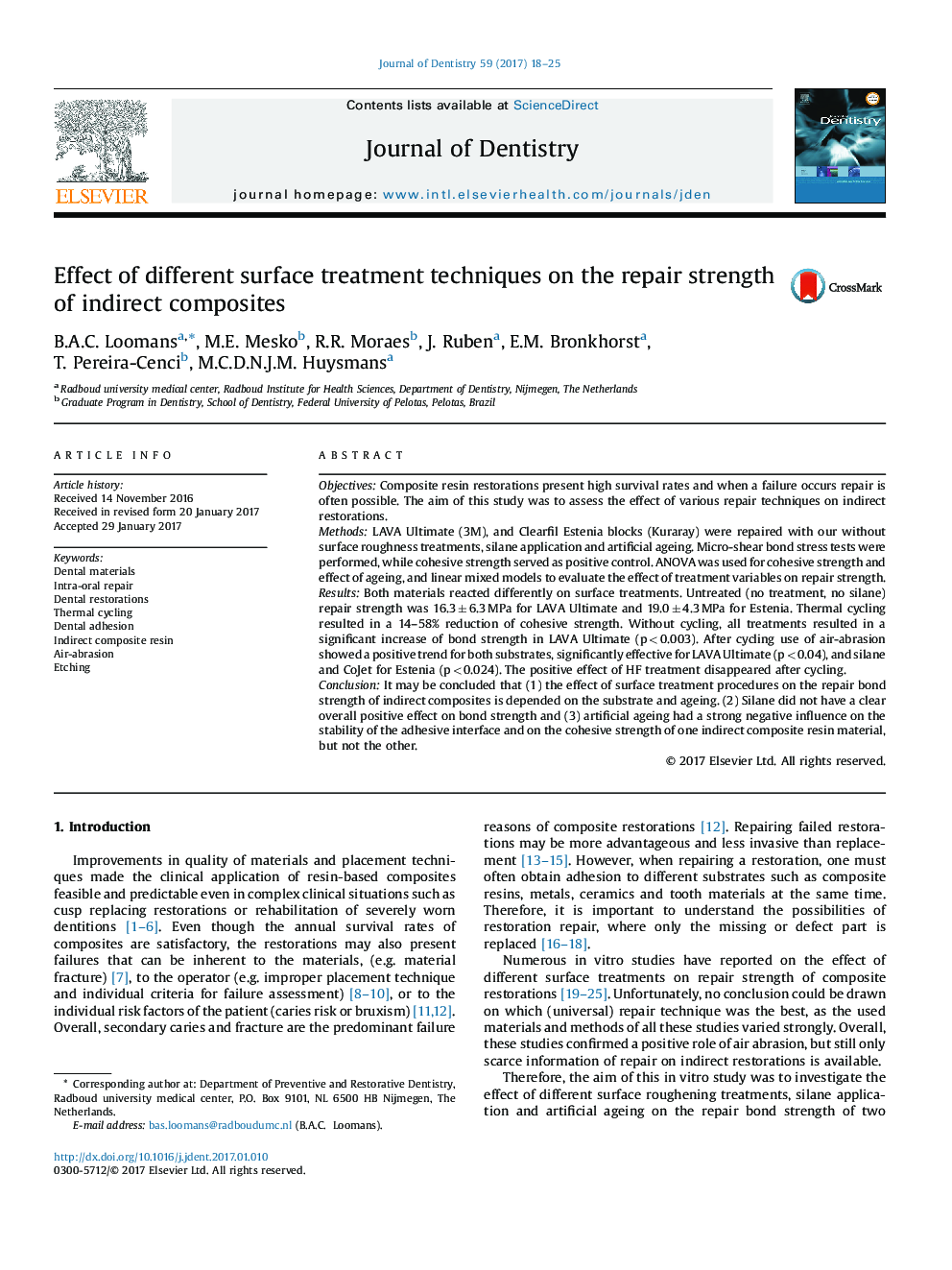| کد مقاله | کد نشریه | سال انتشار | مقاله انگلیسی | نسخه تمام متن |
|---|---|---|---|---|
| 5640617 | 1585470 | 2017 | 8 صفحه PDF | دانلود رایگان |
ObjectivesComposite resin restorations present high survival rates and when a failure occurs repair is often possible. The aim of this study was to assess the effect of various repair techniques on indirect restorations.MethodsLAVA Ultimate (3M), and Clearfil Estenia blocks (Kuraray) were repaired with our without surface roughness treatments, silane application and artificial ageing. Micro-shear bond stress tests were performed, while cohesive strength served as positive control. ANOVA was used for cohesive strength and effect of ageing, and linear mixed models to evaluate the effect of treatment variables on repair strength.ResultsBoth materials reacted differently on surface treatments. Untreated (no treatment, no silane) repair strength was 16.3 ± 6.3 MPa for LAVA Ultimate and 19.0 ± 4.3 MPa for Estenia. Thermal cycling resulted in a 14-58% reduction of cohesive strength. Without cycling, all treatments resulted in a significant increase of bond strength in LAVA Ultimate (p < 0.003). After cycling use of air-abrasion showed a positive trend for both substrates, significantly effective for LAVA Ultimate (p < 0.04), and silane and CoJet for Estenia (p < 0.024). The positive effect of HF treatment disappeared after cycling.ConclusionIt may be concluded that (1) the effect of surface treatment procedures on the repair bond strength of indirect composites is depended on the substrate and ageing. (2) Silane did not have a clear overall positive effect on bond strength and (3) artificial ageing had a strong negative influence on the stability of the adhesive interface and on the cohesive strength of one indirect composite resin material, but not the other.
Journal: Journal of Dentistry - Volume 59, April 2017, Pages 18-25
